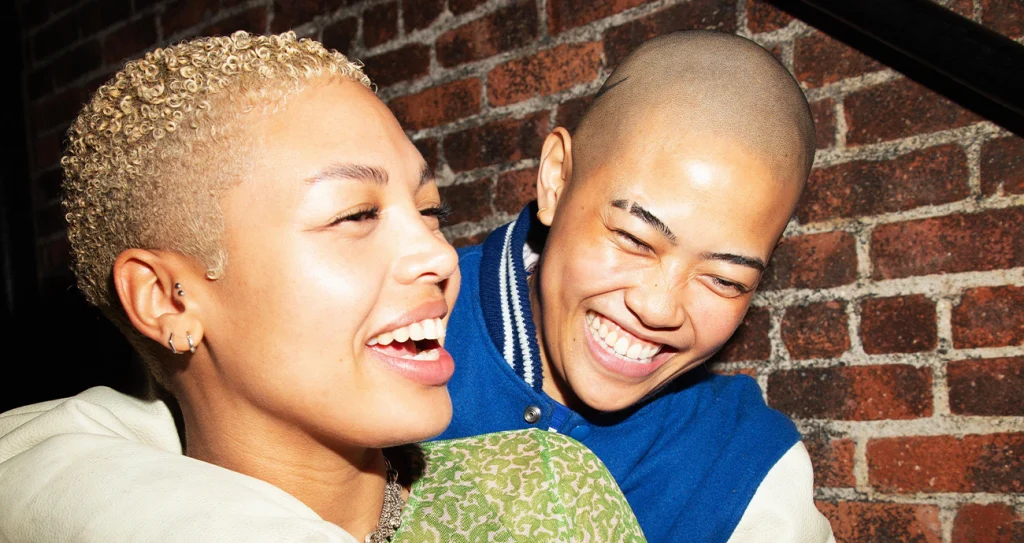In this week’s Our Take, a saucy chef teases a spicy tome, new trends – and some lower expectations – in dating, high returns for lo-fi brand content, and the CEO of Kawaii still has it at 50.
The Saucy Side of Food

You might recognise her by the quirky knitted hamburger headpiece she dons to keep her identity secret. Meet Slutty Cheff: the anonymous, sultry, and razor-sharp voice who’s tasty salad of cooking and sex has the food world a-tremble, one way or the other.
We’re hooked by the teaser for her upcoming book – a short (and slightly NSFW) film – voiced by Lena Dunham. It’s bold, it’s raunchy, and we are obsessed.
Slutty Cheff first captured attention in 2023 with her witty, daring, and intimate tales about food and sex. Since then, she’s amassed over 35.5k Instagram followers, become a Vogue columnist, and is now gearing up for the release of her highly anticipated book, Tart, which will hit shelves in summer 2025.
Equal parts playful and provocative, Slutty Chef proves once again that food, like life, is best served with a side of sass.
‘Micro-mance’ is the New Romance

Bumble’s dating trends for 2025 have landed, and they’re shaking up the love game for everyone. Grand gestures are out, and “Micro-mance” – tiny, thoughtful acts like sharing a playlist or sending inside jokes – is the new way to get in.
For 86% of singles, these small moments are where real connection happens. And while women are leading the charge, men are playing their part in this love story too.
According to Bumble, we’re seeing the emergence of a new male archetype – the ‘babygirl vibe’ guy: emotionally open, empathetic men who are challenging traditional ideas of masculinity in dating. Again.
22% of women rely on their male friends to vet potential dates, and 54% trust their guy besties for insight into men’s behaviour.
Men in finance are still scoring high on the swoon scale (plus ça change), but emotional steadiness is the real flex for 59% of women. Uncertainty, whether about jobs, housing, or life goals, is now a major red flag for 95% of singles, regardless of gender.
Read the report here. And be careful out there.
Speedo’s Social Splash

Speedo’s marketing team, decked out in a smart-casual blazers-over-swimwear combo, created a fun, The Office-style video that shows them brainstorming (and living out) their “Go Full Speedo” campaign. The video is a prime example of a new trend in social media marketing: employee-generated content (EGC).
Speedo isn’t alone. Jewellery brand Alexis Bittar swapped polished ads for unfiltered, casual storytelling, featuring celebrity cameos, and saw their views skyrocket into the millions.
Why does EGC work? For one thing, platforms like TikTok reward authentic and relatable content. More importantly, though: people trust people, and 81% of consumers prioritise trust when making purchases. Employees add a human touch, whether it’s a marketing exec in goggles or an intern cracking jokes.
The benefits go beyond connection—it’s cost-effective, too. Why hire influencers when your own team can create compelling content?
Speedo and others prove that personality out-performs polish. So grab your goggles and let your team take the content reins. The secret to viral marketing might just be sitting next to you.
Still Kawaii at 50

Hello Kitty is not a cat. She’s a five-apples-tall Londoner with no mouth, a love for apple pie, and an unmatched talent for raking in billions while staying perpetually in third grade. Turning 50 this year, she’s proof that the secret to staying young and relevant is a healthy dose of ‘kawaii’ (the Japanese word for cute).
‘Kawaii’ is more than just ‘cute’ in the Western sense. It’s a whole aesthetic – a joyful cornerstone of Japanese popular culture. And Hello Kitty? She’s the CEO of kawaii. With her minimalist face (no mouth, so you can project your own feelings onto her), she has been a blank canvas for half a century, adapting to trends while staying utterly herself.
Licensing turned Hello Kitty into a $80 billion franchise that has seen her appear on everything from lunchboxes to stationery to socks to electric guitars.
Even during her less popular phases, the retro revival and our collective love for indulging in kitsch brought her back. At 50, Kitty proves you can never have too many friends. Or revenue streams.
